What Is a Montage in Film?
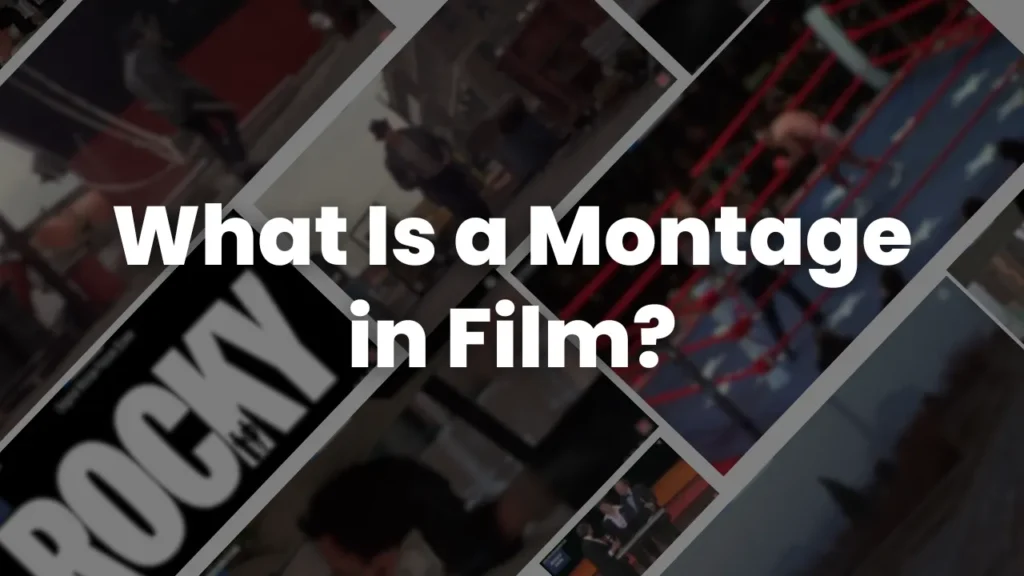
A montage in film is one of the most powerful storytelling tools in cinema. It allows filmmakers to compress time, highlight emotions, and show character growth — all within a few impactful moments. Whether it’s a training sequence, a love story told in flashes, or a journey across continents, the montage captures transformation beautifully.
But what is a montage in a film exactly? How is it different from a scene or sequence? And why do some of the most unforgettable moments in movies — from Rocky to Up — rely on this technique?
To understand how filmmakers plan such sequences visually, check out our guide on what is a storyboard in film — where you’ll learn how storyboards act as the blueprint for montages and every other cinematic moment.
What is a Montage?
The word “montage” comes from the French term meaning “to assemble” or “to put together.” In filmmaking, a montage in film is a sequence of short shots edited together to show the passage of time, build emotion, or convey complex ideas quickly.
For example, instead of showing every day of a character’s workout, a montage sequence in film might show quick clips of the character running, lifting weights, and sweating — all set to powerful music. Within a minute, the audience understands weeks or months of hard work.
A simple film montage definition could be
“A film montage is a collection of shots edited together to tell a story, express emotion, or show time passing — without using dialogue-heavy scenes.”
Origin and Evolution of the Montage
The history of montage in film began in the early 20th century with Soviet filmmakers who saw editing as a powerful storytelling tool. Among them, Sergei Eisenstein is considered the pioneer of montage theory. He believed that placing two different shots together could create a new meaning — an emotion or idea greater than the sum of its parts.
Eisenstein’s approach, known as the Eisenstein montage theory, revolutionized cinema. Instead of showing events in a simple, linear way, filmmakers started experimenting with editing to shape how audiences felt and thought. His iconic films, like Battleship Potemkin (1925), showed how rapid cuts and contrasting images could evoke powerful emotions and political messages.
This theory influenced generations of filmmakers, from Hollywood editors to modern video creators, shaping how montage in film is used today — to compress time, show transformation, and connect audiences to deeper themes without dialogue.
Purpose of a Montage Sequence in Film
A montage sequence in film serves as a creative shortcut — it condenses time and emotion, showing development or change in a visually powerful way. Instead of telling the audience what’s happening, a montage shows it through a blend of visuals, music, and rhythm.
Here are the main reasons filmmakers use a montage in film:
To Show Passage of Time
Montages can show days, months, or even years passing in seconds. For example, in Rocky (1976), the famous training montage shows Rocky improving day by day — without a single line of dialogue.
To Show Character Growth or Transformation
In Up (2009), the emotional opening montage depicts an entire lifetime of love and loss within minutes — perfectly capturing character evolution through visuals and music.
To Create Emotional Impact or Motivation
Montages can make audiences feel inspired, nostalgic, or heartbroken. Goodfellas and The Godfather use montage sequences to build emotional tension and highlight transitions in power, family, and loyalty.
In essence, a film montage isn’t just about editing — it’s about storytelling through emotion, rhythm, and time.
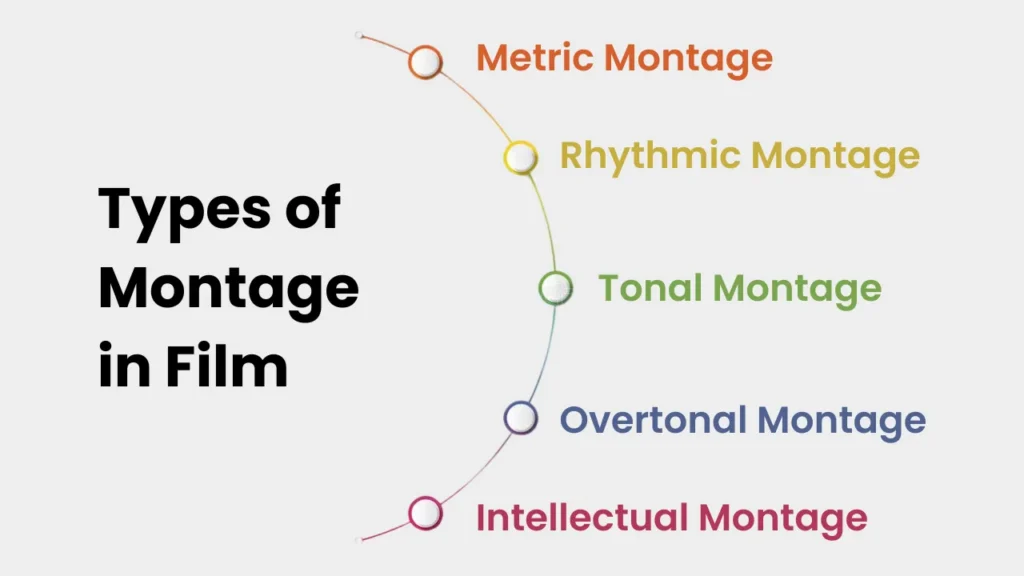
Types of Montage in Film
Filmmakers use different styles of montage in film depending on the story’s tone and pacing. Here are the five main types defined by Eisenstein’s montage theory:
Metric Montage
Cuts are made based purely on timing or frames, regardless of what’s happening on screen. It creates tension and rhythm — often used in action or conflict scenes.
Rhythmic Montage
The editing is matched with the movement or rhythm of the scene, often synced to music. This type of montage sequence in film creates flow and emotional pacing.
Tonal Montage
Focuses on the emotion of the scene. The tone of each shot (lighting, movement, or color) guides how viewers feel. It’s commonly used in dramatic or romantic moments.
Overtonal Montage
A combination of metric, rhythmic, and tonal montage. It blends timing, emotion, and visual flow to create complex, layered feelings.
Intellectual Montage
This style combines contrasting images to suggest ideas or themes — for example, showing a slaughtered animal alongside a battle to symbolize human brutality.
These five types of film montage show how editing isn’t just technical — it’s deeply emotional and intellectual. Each type shapes how stories are felt, not just seen.

Why Filmmakers Use Montages
Filmmakers use montages for both emotional and practical reasons. Here’s why they are so effective:
To Show Time Passing
A montage compresses days, months, or even years into a few moments. It’s often used to show progress or change.
To Build Emotion
Music and visuals combine to create powerful feelings — nostalgia, excitement, or sadness — without needing words.
To Speed Up Storytelling
A montage keeps the audience engaged while skipping repetitive or unnecessary scenes.
To Enhance Rhythm and Style
Through editing and pacing, a montage gives a film energy and mood, whether it’s fast-paced or emotional.
In essence, a montage in film turns ordinary sequences into cinematic experiences that move both the story and the audience.
Film Montage Definition and Concept
The film montage definition can be summed up as the art of editing multiple images or clips together to create meaning. Each shot may not tell much alone, but together they form an emotional or narrative statement.
This idea became famous through early Soviet filmmakers like Sergei Eisenstein, who used montage to evoke emotional responses and guide audience perception. His work showed that editing isn’t just technical — it’s deeply expressive.
Today, the montage technique in film remains a key part of cinematic language, used in dramas, comedies, action films, and even music videos.
Understanding a Montage Sequence in Film
A montage sequence in film is a group of shots that visually represent a longer time frame or series of events. Unlike a single scene, which captures a specific moment, a montage sequence summarizes development or change.
For example:
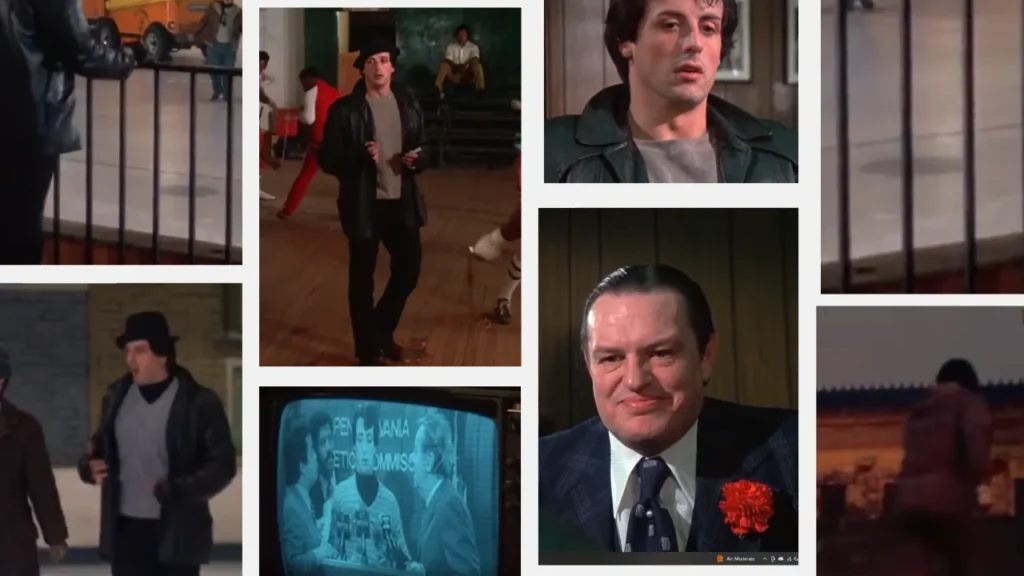
In “Rocky” (1976), the famous training montage shows Rocky running through Philadelphia, punching bags, and preparing for his big fight. Within minutes, we witness weeks of training and emotional growth.
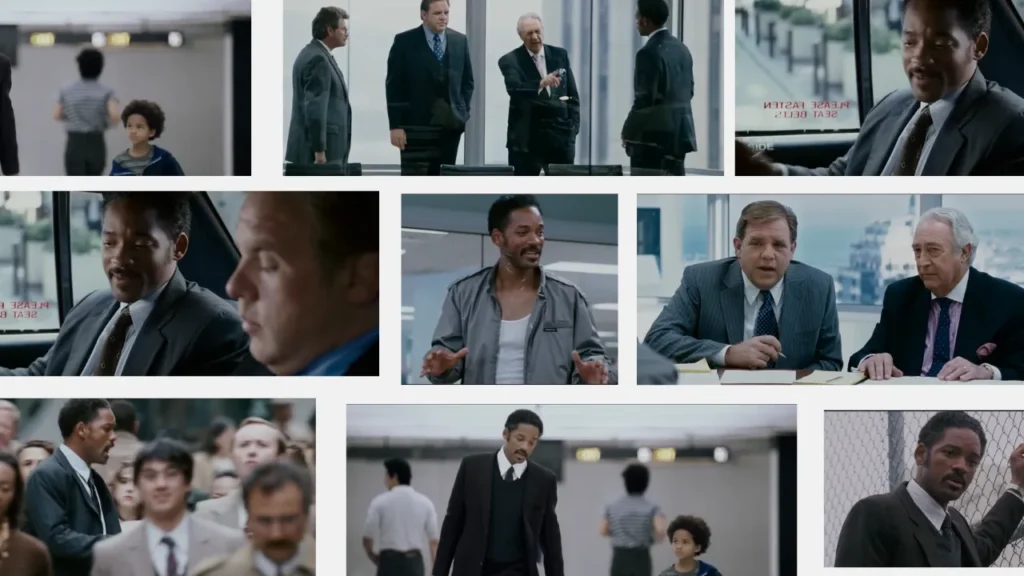
In “The Pursuit of Happyness” (2006), a montage of Chris Gardner’s struggles and small victories communicates his relentless perseverance.
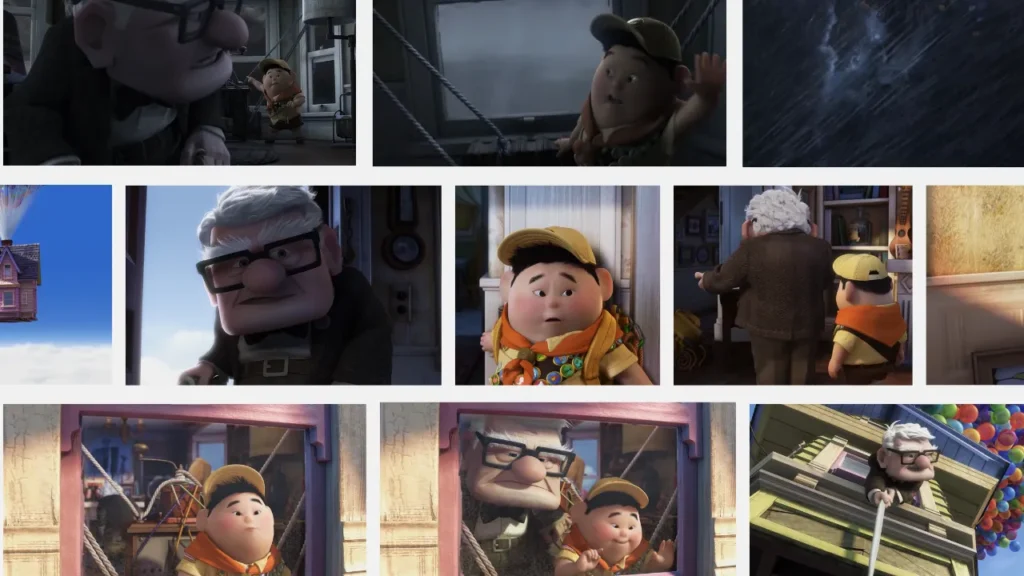
In “Up” (2009), the heart-touching opening montage tells an entire love story without a single line of dialogue — only visuals and music.
These examples show how a montage can make storytelling more emotional, concise, and memorable.
Types of Montages in Film
To understand how filmmakers use montages creatively, let’s look at the main types of montage in film:
Narrative Montage
- Advances the story or shows a character’s journey over time.
- Example: A student learning skills, growing in confidence, and succeeding.
Thematic Montage
- Links different visuals around one theme or message.
- Example: Contrasting shots of luxury and poverty to comment on inequality.
Rhythmic Montage
- Relies on the pace of cuts and music to set tone and mood.
- Example: A dance or action sequence edited to the beat of the soundtrack.
Emotional Montage
- Focuses on feelings rather than the plot.
- Example: Flashbacks during a breakup scene to show nostalgia and loss.
Tonal Montage
- Uses color, lighting, and sound to match emotional tone.
- Example: Warm lighting for love montages or cool tones for sorrowful ones.
Each montage type serves a unique narrative or emotional purpose, giving directors creative freedom to shape audience perception.
Examples of a Montage in Film
Some of the most iconic examples of a montage in film history include:
- Rocky (1976) – The training montage became a cultural symbol of determination and grit.
- Up (2009) – Pixar’s opening montage captures an entire lifetime of love and loss in just a few minutes.
- Team America: World Police (2004) – The “Montage Song” humorously mocks how common montage sequences are in Hollywood films.
- Goodfellas (1990) – The cocaine and crime montage perfectly captures the chaos of Henry Hill’s life.
- Mulan (1998) – “I’ll Make a Man Out of You” training montage shows character transformation through song and visuals.
These examples prove how a montage sequence in film can express change, emotion, and storytelling in ways that dialogue never could.
Editing and Music: The Heart of a Montage
Editing and music are what truly bring a montage in film to life. Together, they define its rhythm, emotion, and storytelling power. While editing controls the structure and pace, music adds soul and energy to every frame.
1. Editing and Rhythm
Editing determines how time feels inside a montage.
- Fast cuts create energy and motivation, often used in training or action sequences like Rocky.
- Slow cuts build emotion and reflection, as seen in Up’s moving opening montage.
Smooth transitions such as fades and match cuts make the montage sequence in film feel natural and connected, even as time jumps forward.
2. The Power of Music
Music sets the tone for every film montage. A powerful soundtrack can transform visuals into emotion: upbeat music drives excitement, while soft melodies evoke nostalgia or sadness. Many editors cut clips to the beat of a song, ensuring that visuals and sound move together like a heartbeat.
3. Harmony Between Both
When editing and music align perfectly, a montage becomes unforgettable. The visuals deliver meaning, the music builds emotion, and their harmony creates momentum that words alone can’t express. That’s the magic of a great montage — turning time, sound, and story into one seamless cinematic moment.
Montage vs. Scene vs. Sequence
It’s easy to confuse these filmmaking terms, so let’s clarify:
| Term | Meaning | Example |
|---|---|---|
| Scene | A single event in one location and time. | A conversation between two characters. |
| Sequence | A collection of related scenes forming a mini-story. | A chase or battle sequence. |
| Montage | A series of short shots edited together to show time, change, or emotion. | A training montage or love story summary. |
So, while every montage is a sequence, not every sequence is a montage.

How to Create a Montage (For Filmmakers)
Creating a montage in film is both an art and a technical craft. It requires careful planning, visual storytelling, and a sense of rhythm. A great montage doesn’t just show time passing — it feels like time is moving through emotion, sound, and imagery.
Here’s a complete process filmmakers and editors can follow to design a compelling montage sequence in film step by step:
1. Define the Purpose of Your Montage
Before you start, ask yourself, why does this montage exist?
The purpose determines every creative choice you’ll make — pacing, visuals, and music.
- Is it to show character growth (like training or learning)?
- To express emotion (like love, loss, or motivation)?
- Or to compress time (like showing weeks or months passing in seconds)?
When you define your purpose clearly, your montage becomes meaningful instead of just visually attractive.
2. Write a Short Script or Concept Note
Even though a montage has no dialogue, it still needs direction. Write a brief description of what each part should express.
For example:
“The character trains every morning, improves gradually, and finally succeeds — all shown in quick, energetic cuts.”
This helps you visualize the emotional journey inside the film montage before you start filming or editing.
3. Storyboard Each Shot
Storyboarding is the backbone of a good montage. It allows you to plan how each shot connects visually and emotionally.
- Sketch or outline every key moment in sequence.
- Decide what camera angles or movements you’ll use (wide, close-up, drone, etc.).
- Think of visual patterns — repetition, contrast, or motion continuity.
If your montage is music-driven, mark where each shot might align with the rhythm or lyrics.
To simplify this step, you can use Murphy’s AI-powered storyboarding tools to visualize your montage flow before shooting.
4. Choose the Right Music and Tone
Music sets the emotional temperature of your montage. It tells the audience how to feel while watching.
- For action montages, pick energetic, fast-paced tracks.
- For emotional montages, use soft, melodic, or orchestral tunes.
- For thematic montages, experiment with ambient or symbolic soundscapes.
Once you choose the soundtrack, use its rhythm as your guide — your cuts should flow naturally with the beat or emotional transitions in the music.
5. Gather Visual Footage
Shoot or collect footage that represents the stages of transformation or progress. Don’t rely on random shots — make sure each one adds value to the message.
- Capture variety (close-ups, wides, time-lapses, motion shots).
- Maintain visual continuity (lighting, costume, and environment consistency).
- Use symbolic visuals to express deeper meaning — for example, sunrise for new beginnings, rain for struggles, or city lights for energy.
These visual cues make your montage in film more cinematic and emotionally layered.
6. Edit for Rhythm and Flow
Editing is where your montage truly takes shape. Start by placing your best shots on the timeline and trimming them for rhythm.
- Use cuts for speed and energy.
- Use dissolves, fades, or crossfades for emotional or time transitions.
- Adjust shot duration to match the music’s tempo or emotion shifts.
The key rule: every shot must serve a purpose. If a clip doesn’t move the story or emotion forward, remove it.
A successful montage sequence in film feels seamless — like a heartbeat that rises and falls in sync with the audience’s emotion.
7. Add Sound Effects and Ambient Layers
Sound design adds realism and emotional texture. Layer soft ambient sounds — footsteps, wind, or crowd noise — beneath the music.
- It makes the montage feel alive and grounded.
- Even if viewers don’t consciously notice these sounds, they feel the atmosphere subconsciously.
This blend of sound and visuals strengthens the impact of your film montage.
8. Refine Color and Visual Tone
Color grading plays a crucial role in creating mood.
- Use warm tones for inspiration, joy, or love.
- Use cool or desaturated tones for sadness or struggle.
- Maintain color consistency to keep the montage cohesive.
Color acts as a storytelling language — it connects emotions visually and defines the aesthetic of your film.
9. Review, Trim, and Polish
Once your rough cut is complete, watch it multiple times and refine:
- Remove shots that feel repetitive or slow.
- Tighten transitions for smoother flow.
- Adjust music timing and visual cues for maximum emotional hit.
Sometimes, even removing one second from a clip can improve the rhythm dramatically.
10. Test with an Audience
Before finalizing, show your montage to a few viewers — filmmakers, friends, or editors.
Ask them what emotion or story they felt.
If their response matches your intention, your montage in film is successful. If not, tweak pacing or visuals until it does.
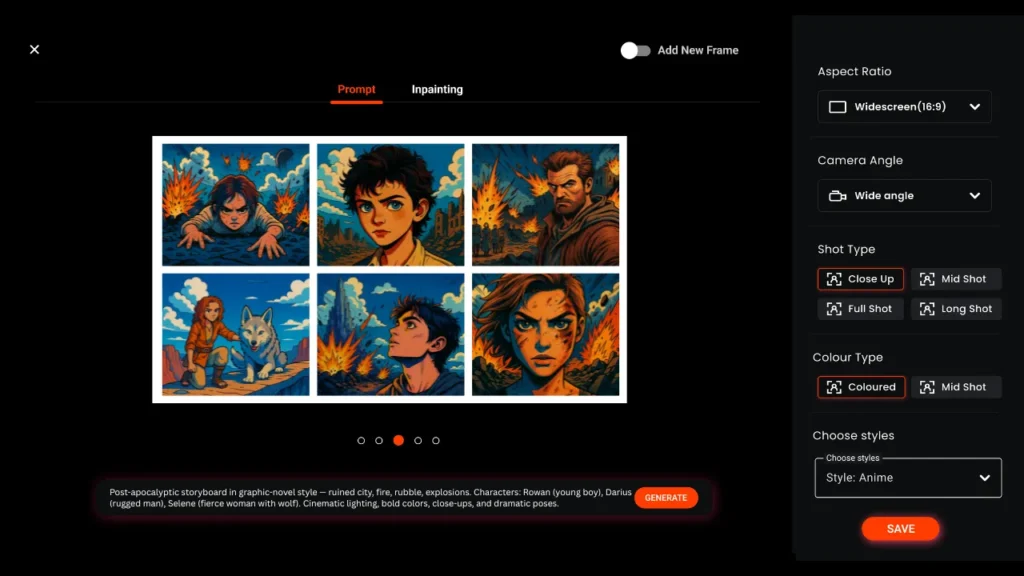
How Storyboarding Connects to a Montage
Before a montage ever reaches the editing stage, it begins in pre-production steps — where filmmakers plan the visual rhythm, emotion, and transformation they want to convey. One of the most important tools in this stage is the storyboard.
Storyboarding helps directors and editors visualize how individual shots will come together later in the montage. Each frame on a storyboard outlines camera angles, transitions, and emotional beats — giving the creative team a roadmap before filming begins.
For instance, if a director plans a training montage, the storyboard might show a character’s gradual improvement through sketches or still frames: running, lifting weights, and finally achieving success. This visual guide ensures that when footage is edited later, every cut and transition feels intentional.
Today, AI tools for filmmakers make this process even more efficient. They can generate digital storyboards, suggest shot ideas, and help visualize pacing — saving time and enhancing creativity during pre-production. Similarly, using a movie script generator can help writers quickly outline scenes that later evolve into montages, ensuring smooth visual storytelling from script to screen.
In short, while a montage is an editing technique, storyboarding is its foundation — helping filmmakers transform imagination into cinematic reality.
Most Asked Questions About Montage in Film
What is a montage in a film?
A montage is a series of short shots edited together to show time passing, character growth, or emotional transformation in a visually powerful way.
What is the purpose of a montage sequence in film?
The purpose of a montage is to condense time, emphasize emotion, and advance the story without showing every event in real time.
What is an example of a montage in a movie?
Famous examples include Rocky’s training montage, Up’s emotional life sequence, and Goodfellas’ crime montage.
What is the difference between a montage, scene, and sequence?
A scene captures one moment in one location, a sequence combines several scenes, and a montage is a stylized sequence made of short, edited shots.
Who invented montage theory?
Soviet filmmaker Sergei Eisenstein developed montage theory, showing how combining two shots could create new meaning and emotion.
What are the main types of montage in film?
The five key types are metric, rhythmic, tonal, overtonal, and intellectual montage — each focusing on timing, emotion, or idea.
How is a montage created in filmmaking?
A montage is made by planning shots during pre-production steps, filming dynamic visuals, and editing them rhythmically with music and sound.
What software is used to edit montages?
Editors often use programs like Adobe Premiere Pro, Final Cut Pro, or DaVinci Resolve to craft smooth and emotional montage sequences.
What role does music play in a film montage?
Music drives the rhythm and emotion of a montage, helping the audience feel the mood and pacing of the story.
Are storyboards used for montages?
Yes. Filmmakers often storyboard montage sequences in advance to plan visuals and transitions — sometimes aided by AI tools for filmmakers.
Can a montage tell a story without dialogue?
Absolutely. Many of the best montages, like Up’s opening sequence, rely entirely on visuals and music to tell a complete emotional story.
What is Eisenstein’s montage theory in simple terms?
Eisenstein’s theory states that combining two unrelated shots creates a new meaning — using editing to make the audience think or feel something deeper.
What are some common mistakes when creating a montage?
Using random clips without purpose, ignoring rhythm or pacing, or mismatching music and visuals can weaken the impact of a montage.
Why are montages important in modern filmmaking?
Montages make storytelling faster, more emotional, and more cinematic — a crucial tool for modern editors, YouTubers, and filmmakers alike.
How do AI tools help in making montages?
AI tools assist filmmakers by auto-editing clips, syncing visuals with music, and generating storyboards or script outlines for montage planning.